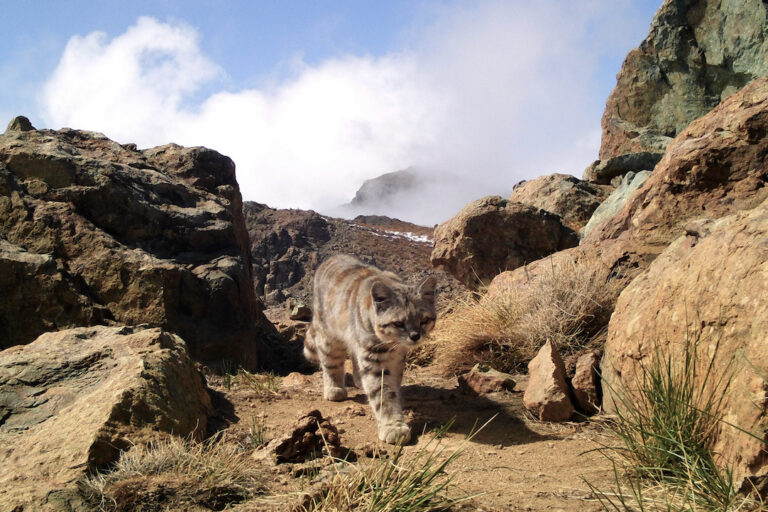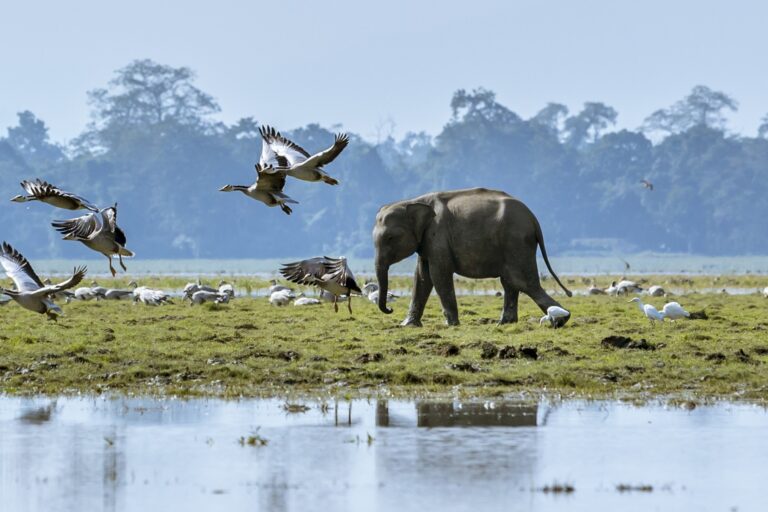- Scientists have described a new-to-science species of frog from Tanzania’s Ukaguru Mountains with a unique trait: it’s silent.
- The males of this species have tiny spines on their throats, which may serve as a means of species recognition for the females.
- Researchers encountered the species during an expedition in search of another species, the elusive Churamiti maridadi tree toad, which has only been spotted twice in the wild and is feared to be extinct.
- The Ukaguru Mountains have a high degree of endemism, and describing this new species highlights the vast amount of knowledge still to be gained about this biodiversity-rich area.
Up in Tanzania’s Ukaguru Mountains, researchers have found a new-to-science frog species with a unique trait: it doesn’t make a sound. The small, silent Ukaguru spiny-throated reed frog (Hyperolius ukaguruensis) doesn’t croak, chirp, sing or ribbit.
“It’s a very odd group of frogs,” said Lucinda Lawson, a conservation biologist and assistant professor at the University of Cincinnati. The new species, a member of the Hyperolius genus of African reed frogs, was described in the journal PLOS ONE.
Frogs typically use sounds to attract a mate, but the males of this species have tiny spines on their throats, which scientists think females might use to identify the males.
“The male frogs don’t call like most other frogs do. We think they may use the spine as something like Braille for species recognition,” Lawson said. “Without a call, they need some other way to recognize each other.”

Lawson and her team first encountered the frog in 2019 during their search for another species, the elusive Churamiti maridadi tree toad, in the Ukaguru Mountains. Despite at least seven previous surveys in the area, C. maridadi has only been spotted twice in the wild by scientists and is feared to be extinct. Although Lawson’s team didn’t find the tree toad, their expedition led them to the silent Ukaguru spiny-throated reed frog.
According to Lawson, describing a new member of this rare group of frogs, which consists of only a few species found in small populations, is a major victory for conservation efforts.
“Time spent looking for the beautiful tree toad yielded unexpected results. It was a fantastic finding that made the effort well worth it,” study co-author H. Christoph Liedtke, a postdoctoral researcher with the Spanish National Research Council, said in a press release.

The Ukaguru Mountains in central Tanzania are sometimes referred to as sky islands. Around 30 million years ago, the entire region was covered by a vast rainforest. However, during a drier and cooler period about 10 million years ago, the lowland forests transformed into savannas, leaving the mountainous areas as “islands” of tropical forest.
The persistent humid climate and the seclusion of each peak in the range have led to a high degree of endemism: Nearly 25% of all vertebrate species that occur in the Ukaguru Mountains are found nowhere else on Earth.

“The Ukaguru Mountains are part of the greater Eastern Arc Rift, a fascinating cradle of biodiversity, with many species endemic to single mountain blocks,” Liedtke said. “The fast population growth in Tanzania means that the mountain forest habitats are under growing threats from people.”
Understanding how many of these frogs exist in the wild and where they live is an integral part of their conservation. And the researchers say finding this new-to-science frog highlights how much more there is to learn about this part of the world.
“We still have a long way to go before understanding what species are there and where they can be found,” said Simon Loader, curator of vertebrates at London’s Natural History Museum, who helped describe the new species. “This is particularly the case for the biodiverse-rich submontane forests of Tanzania.”
Citation:
Lawson, L. P., Loader, S. P., Lyakurwa, J. V., & Liedtke, H. C. (2023). Diversification of spiny-throated reed frogs (Anura: Hyperoliidae) with the description of a new, range-restricted species from the Ukaguru Mountains, Tanzania. PLOS ONE, 18(2), e0277535. doi:10.1371/journal.pone.0277535
Banner image of the Ukagura spiny-throated reed frog, a new-to-science species, courtesy of Christoph Liedtke.
Liz Kimbrough is a staff writer for Mongabay. Find her on Twitter @lizkimbrough
Also from this reporter:
Canopy bridges connect forests, wildlife, and international researchers
FEEDBACK: Use this form to send a message to the author of this post. If you want to post a public comment, you can do that at the bottom of the page.














